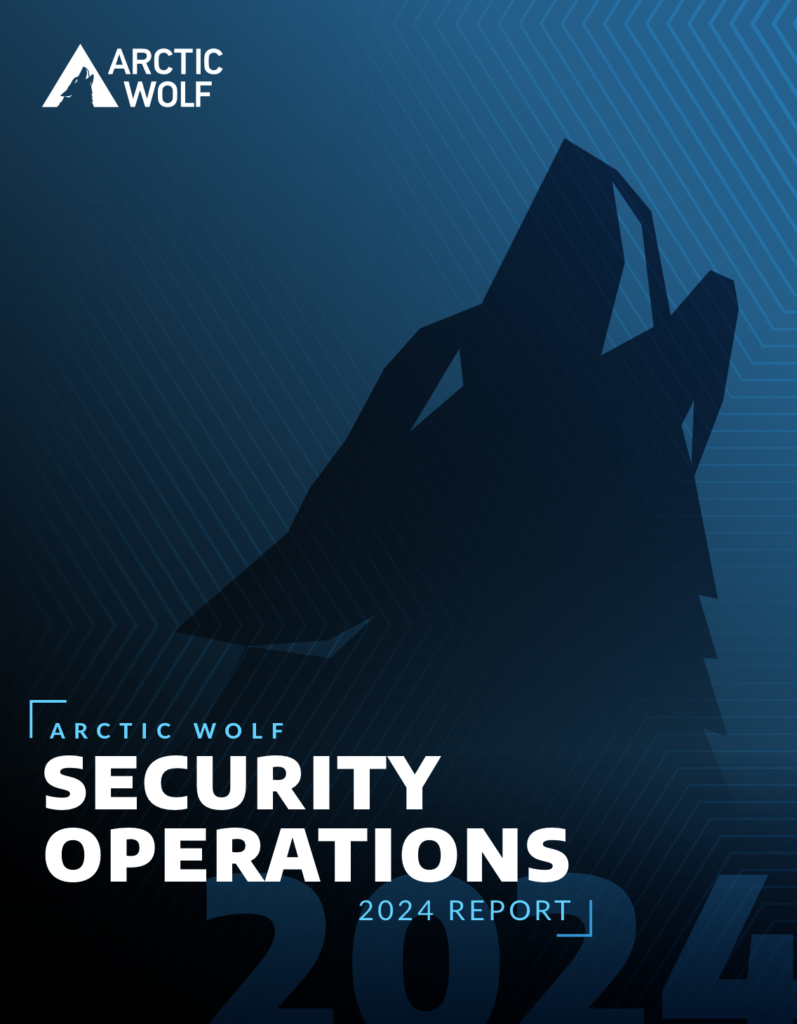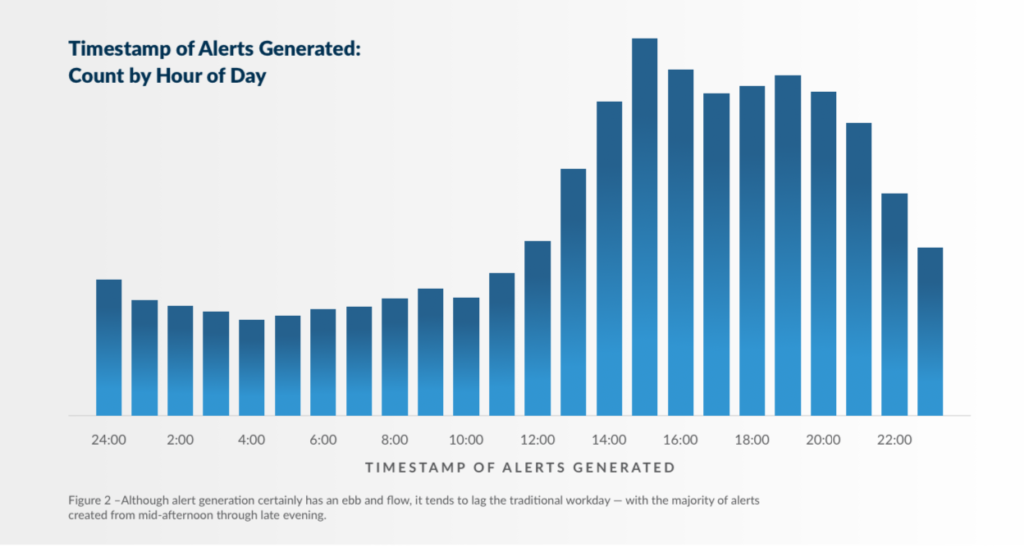As organizations build higher walls and dig deeper moats to protect themselves, the tide of cyber threats continues to rise, threatening to spill over these defenses. Arctic Wolf, a security operations provider, released its 2024 Security Operations Report today, which explores data and insights gathered from more than 250 trillion security events analyzed by the Arctic Wolf Platform over the past year. The report reveals that despite record investments in cybersecurity challenges, the pace of cyber-attacks is outstripping these efforts, leaving many organizations struggling to keep their heads above water in an increasingly turbulent threat landscape.
Our takeaway follows: you can get the whole report here.

Key Findings from the 2024 Report
- The Need for 24/7 Security Monitoring The report highlights that nearly half (45%) of security incidents occur outside of traditional working hours, with 20% occurring over weekends. This underscores the urgent need for continuous, around-the-clock monitoring as cybercriminals increasingly take advantage of after-hours gaps in defenses. The data shows that maintaining vigilance at all times is now a critical necessity for organizations looking to protect themselves from cybersecurity challenges in the age of remote work and cloud-based applications.

Security Tool Overload:
Arctic Wolf finds that the sheer volume of alerts from multiple security tools overwhelms many organizations. Identity and Access Management (IAM) tools alone have become the primary source of alerts, with identity-related data making up seven of the top ten indicators of compromise. This volume of data can be daunting, highlighting the need for streamlined security operations that can efficiently filter out noise and focus on real threats, addressing core cybersecurity challenges.
Technology Companies Fall Behind in Security Posture:
The report identifies a surprising trend: technology companies, often seen as pioneers of digital innovation, have the weakest security posture compared to other industries. In contrast, highly regulated sectors like Banking, Legal, and Healthcare show stronger security measures, reflecting their more stringent regulatory environments. This disparity suggests that the rapid pace of innovation in the tech sector may be outpacing the adoption of robust security practices to mitigate their cybersecurity challenges.
Focus on Core Business Applications by Attackers:
The report reveals that attackers target widely used business applications, such as Microsoft Outlook and Windows 10, among the top exploited applications over the past year. This trend highlights the importance of IT and security teams remaining vigilant about identifying and patching vulnerabilities in these critical tools to prevent breaches.
Persistent Threats from Ransomware and Social Engineering
Despite the volatile cybersecurity environment, ransomware remains a persistent threat. However, the report notes that Arctic Wolf customers experienced far fewer impacts from ransomware attacks than the industry average, with less than 2% affected compared to a 45% industry average. This success is attributed to proactive measures like continuous monitoring and advanced threat detection. Social engineering, particularly phishing, remains a significant risk, with Arctic Wolf observing a 500% increase in phishing activity during critical events.
Steps to Improve Cybersecurity Defenses
Dan Schiappa, Chief Product and Services Officer at Arctic Wolf, emphasizes the need for organizations to adopt a comprehensive approach to security operations. “Organizations that effectively manage their security operations are better positioned to defend against evolving cyber threats. Yet, many lack the resources or expertise to build these capabilities on their own,” Schiappa states. The report offers several strategies for security leaders to consider:
- Implementing 24/7 monitoring to detect and respond to threats at any time.
- Reducing complexity by optimizing the use of security tools and focusing on those that provide the greatest value to address cybersecurity challenges.
- Improving identity and access management (IAM) processes to filter and prioritize alerts effectively.
- Ensuring that core business applications are promptly patched and updated to mitigate risks.
- Strengthening defenses against social engineering through regular training and awareness programs.
A Call for Greater Cybersecurity Preparedness
Arctic Wolf’s 2024 Security Operations Report calls on organizations to reassess their cybersecurity strategies and ensure that their investments are in technology and operations. The report provides a guide for achieving better security outcomes by adopting best practices and learning from the experiences of Arctic Wolf’s extensive customer base—a lot to consider in the report that addresses various cybersecurity challenges.
To explore the full findings and recommendations from the 2024 Security Operations Report, visit Arctic Wolf’s website.
Other News: In 74% of Ransomware Attacks, the Crooks Got At Least Some $: Arctic Wolf Survey(Opens in a new browser tab).
Other News: Toyota has a data dilemma after hackers leak 240GB of customer information.